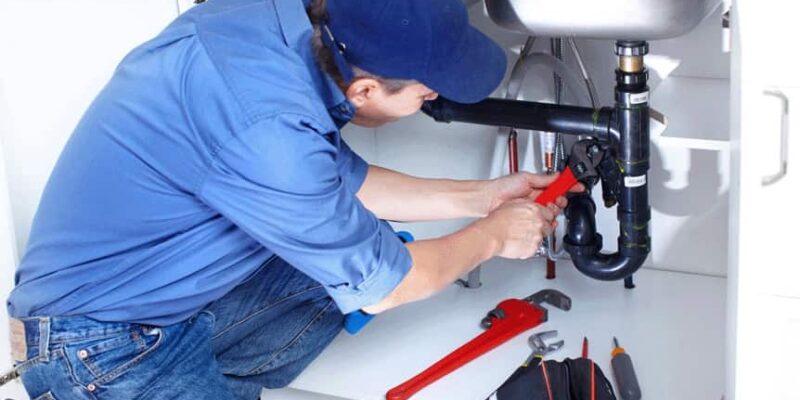Gas appliances are integral to our daily lives, providing heating, cooking, and hot water solutions. However, improper installation or maintenance of gas appliances can pose significant risks, including gas leaks, carbon monoxide poisoning, and even explosions. That’s why gas fitters in Australia must adhere to strict safety guidelines to ensure the safety of individuals and properties.
This blog post will explore the essential gas fitter safety guidelines and how they optimise gas appliance installations, prevent accidents, and safeguard consumer safety.
Gas Fitter Safety Guidelines: An Overview
Licensed or Registered Gasfitter
When do you need a gas fitter? Regarding gas fitting work, the first and foremost requirement is to hire a licensed or registered gas fitter. This crucial step ensures that individuals responsible for handling gas-related tasks possess the necessary qualifications, knowledge, and experience to deal with gas appliances safely.
Compliance with the Gas Safety Act
Gas fitters must comply with the Gas Safety Act, which provides a legal framework for gas safety in Australia. It outlines the responsibilities of gas fitters, including installation, maintenance, and repair of gas appliances, and the obligations of rental providers and property owners.
Gas Safety Checks
Gas safety checks are essential to identify and rectify any potential issues with gas appliances. Gas fitters should conduct regular safety checks to ensure that appliances are in good working condition, free from leaks, and comply with safety requirements. These checks may include inspecting gas pipes, fittings, regulators, and ventilation systems.
Carbon Monoxide Poisoning Prevention
Carbon monoxide (CO) is a colourless and odourless gas that faulty gas appliances can emit. To prevent carbon monoxide poisoning, gas fitters should install and maintain appliances according to the manufacturer’s instructions, ensuring proper ventilation and using carbon monoxide detectors where necessary.
Gas Leaks Detection
Gas leaks are a significant safety hazard and can lead to explosions or fires. Gas fitters should be vigilant in detecting leaks during installations or maintenance work. If a gas leak is suspected, immediate action must be taken, such as shutting off the gas supply, ventilating the area, and contacting the gas supplier or emergency services.
Standard Gas Installations
Gas installations should comply with the standards set by regulatory authorities, such as Energy Safe Victoria. These standards cover pipe sizing, pressure testing, appliance clearances, and proper installation techniques. Following these standards ensures that gas installations are safe and reliable.
Electrical Safety
Gas fitters often work with electrical systems when installing or servicing gas appliances. They must understand electrical safety principles and adhere to regulations to prevent electrical hazards.
Record Keeping
Gas fitters should maintain accurate records of gas work, including installation, repair, and service. These records help track compliance, enable future inspections, and provide valuable information for future reference or in case of any questions regarding the gas appliance servicing work carried out.
Manufacturer’s Instructions
Gas fitters must strictly adhere to the manufacturer’s instructions when installing or servicing gas appliances. These instructions guide proper installation techniques, maintenance requirements, and safe operation of the appliances.
Permanent Ventilation
Adequate ventilation is crucial for gas appliances, especially those that burn gas for combustion. Gas fitters should ensure that there is proper permanent ventilation in place to remove combustion products and prevent the buildup of harmful gases.
Compliance Certificates
After completing gas servicing work, gas fitters should issue customer compliance certificates. These certificates prove the work has complied with relevant regulations and safety standards.
Gas Safety in Rental Properties
Ensuring gas safety in rental properties is paramount for landlords and tenants. Rental properties have specific requirements and obligations regarding gas safety to protect the well-being of occupants and prevent potential hazards. Let’s delve into the key aspects of gas safety in rental properties.
- Responsibilities of Rental Providers: Rental providers, which include landlords and property managers, are legally responsible for the safety of gas installations and appliances in their rental properties. They must ensure compliance with gas safety regulations and take necessary precautions to prevent accidents.
- Engaging a Qualified Gas Fitter: Rental providers should hire a qualified gas fitter to conduct gas safety checks and any required installations or repairs. A licensed or registered gas fitter possesses the necessary expertise and knowledge to assess the condition of gas appliances and identify potential risks.
- Regular Gas Safety Checks: Gas safety checks should be conducted regularly in rental properties. These checks are usually required every two years, although specific regulations may vary depending on the region. Gas fitters inspect and test gas appliances, pipes, and fittings to ensure they are in proper working condition and comply with safety standards.
- Compliance Certificates: Following a successful gas safety check, the gas fitter will issue a compliance certificate to the rental provider. This document indicates that the gas appliances and installations in the property have been inspected and meet the necessary safety requirements. Rental providers should keep these certificates on record as proof of compliance.
- Tenant Awareness: Rental providers must educate tenants about gas safety and their role in maintaining a safe living environment. This includes informing them about the location of gas shut-off valves, the importance of reporting any gas-related issues promptly and providing guidance on recognising signs of gas leaks, such as the smell of gas or hissing sounds.
- Prompt Action on Reported Issues: If a tenant reports a gas-related issue, such as a gas leak or malfunctioning appliance, rental providers must act promptly to ensure the safety of the tenants. This involves engaging a qualified gas fitter to immediately inspect and rectify the problem.
- Record-Keeping: Rental providers should maintain accurate records of gas safety checks, repairs, and maintenance in their properties. These records demonstrate compliance with safety regulations and serve as a reference for future inspections or inquiries.
- Cooperation with Gas Fitters: Rental providers should collaborate with gas fitters and provide them with easy access to gas appliances and installations in their properties. This cooperation ensures gas fitters can perform their tasks effectively and thoroughly, enhancing gas safety.
By prioritising gas safety in rental properties, landlords and property managers demonstrate their commitment to providing a secure living environment for tenants. Compliance with gas safety regulations protects individuals from potential hazards and mitigates liability risks for rental providers.
Gas safety is a shared responsibility, and collaboration between rental providers, tenants, and gas fitters is essential to maintain a secure and comfortable living environment for all parties involved.
Protect Lives and Properties with Gas Safety!
Gas fitter safety guidelines are of utmost importance to ensure standard gas installation, maintenance, and operation. By adhering to these guidelines, gas fitters play a vital role in safeguarding consumer safety, preventing gas leaks, carbon monoxide spillage, and other hazards associated with gas appliances.
Gas fitters must stay updated with new regulations, maintain compliance with safety standards, and prioritise record-keeping to promote gas safety and protect the well-being of individuals and properties.
Remember, safety is paramount, and any concerns regarding gas safety should be addressed by a licensed or registered gasfitter as soon as possible.














Comments